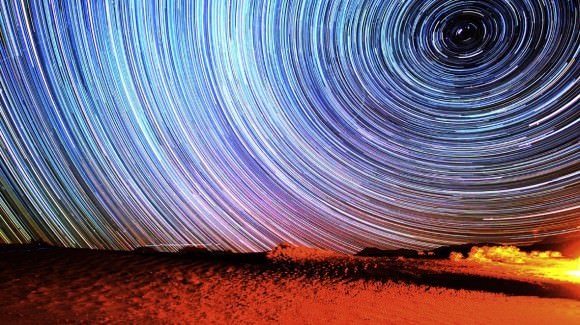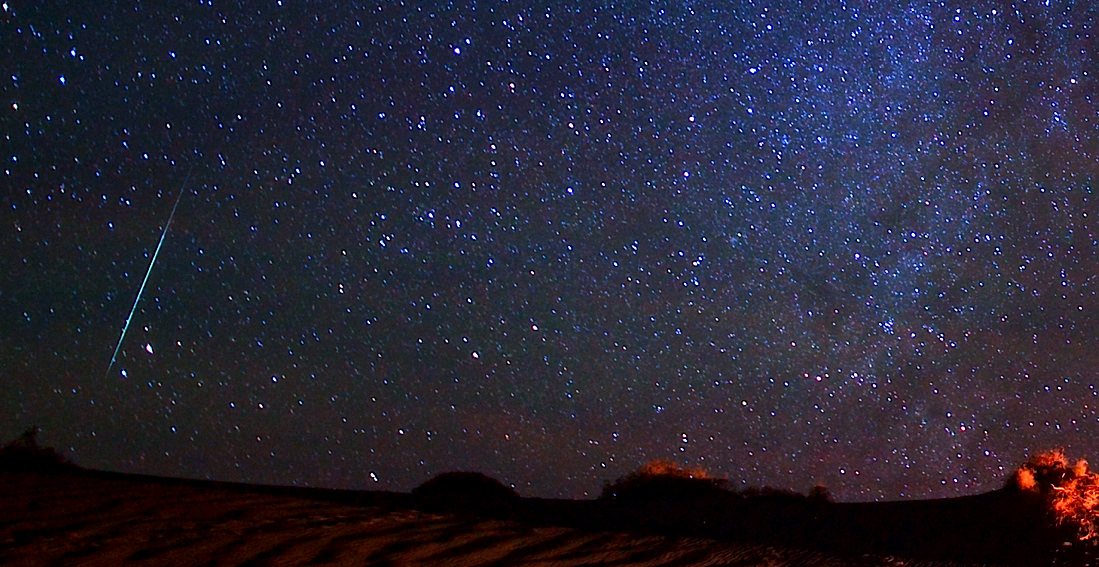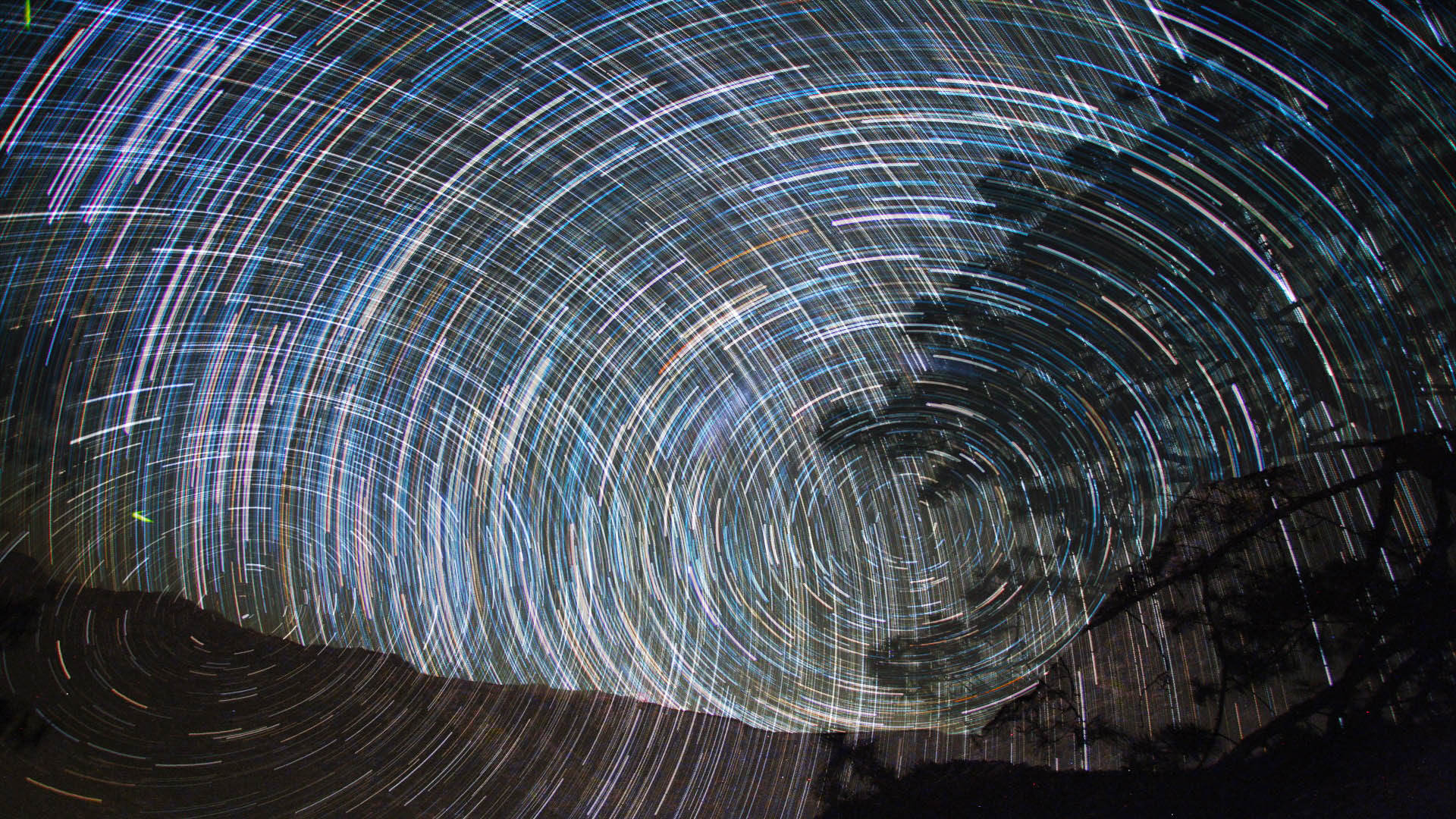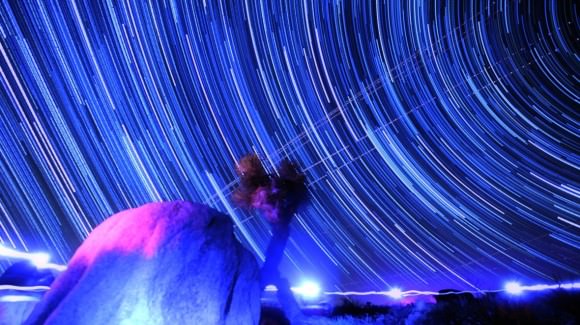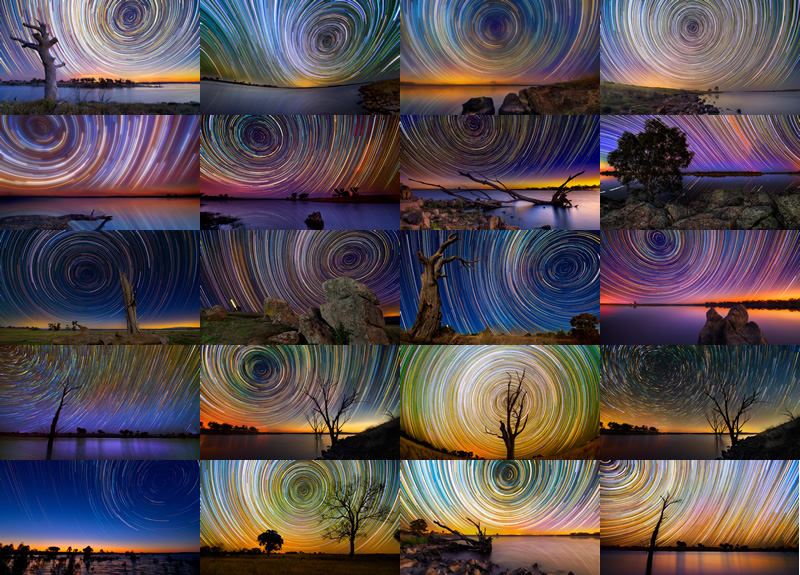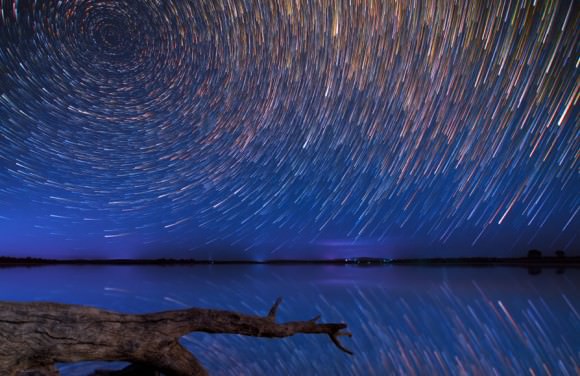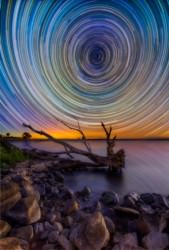Here’s yet another gorgeous timelapse from Gavin Heffernan and his team. As we previewed in our Geminid Meteor Shower post, the Sunchaser Pictures team trekked to the world-famous Eureka Dunes in Death Valley National Park to search for some of the darkest skies on Earth during the meteor shower peak on the night of December 13th, 2012. They braved a long journey, a tough climb cold temperatures.
“But it was all worth it when the skies cleared and showed us an incredible galactic palette!” Gavin writes on Vimeo.
In addition to Geminids, there are star trails, planets and a weird spiraling object at about 1:30-1:35. It makes three broad circular sweeps over the desert – although in timelapse it appears to be moving fast, but the 5 seconds of time in timelapse equals about 50 minutes, so it’s actually not moving all that fast. It can also be seen cutting through the circular star trails picture below. There’s another 25-second exposure that of the object moving that makes it look almost like a colored rope.
“I don’t think that ‘rope’ look is unusual for a normal plane etc.,” Gavin told Universe Today via email. “The circular motion, and very slow movement are what really make it interesting/unusual. It’s definitely worth noting that the site is definitely near some kind of military installation or air force base, because we saw the spectacular sight of F-16 fighter planes zooming over the dunes, not too far off the ground. I know for sure it wasn’t a helicopter, because we would have heard it.”
Shots from the timelapse:
